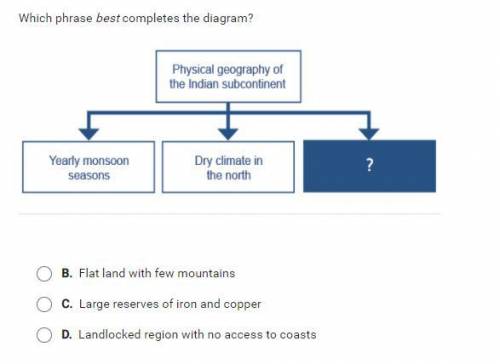
Business, 20.10.2020 18:01 gonzalesalexiaouv1bg
How are public goods and public assistance programs paid for in the United States?
A. Profits earned by corporations
B. Tax revenue collected from consumers and producers
C. Prevent competitions
D. Imcome earned from sales of stock

Answers: 1
Another question on Business

Business, 22.06.2019 08:00
At a student café, there are equal numbers of two types of customers with the following values. the café owner cannot distinguish between the two types of students because many students without early classes arrive early anyway (i.e., she cannot price-discriminate). students with early classes students without early classes coffee 70 60 banana 51 101 the marginal cost of coffee is 10 and the marginal cost of a banana is 40. the café owner is considering three pricing strategies: 1. mixed bundling: price bundle of coffee and a banana for 161, or just a coffee for 70. 2. price separately: offer coffee at 60, price a banana at 101. 3. bundle only: coffee and a banana for 121. do not offer goods separately. assume that if the price of an item or bundle is no more than exactly equal to a student's willingness to pay, then the student will purchase the item or bundle. for simplicity, assume there is just one student with an early class, and one student without an early class. price strategy revenue from pricing strategy cost from pricing strategy profit from pricing strategy 1. mixed bundling $ $ $ 2. price separately $ $ $ 3. bundle only $ $ $ pricing strategy yields the highest profit for the café owner.
Answers: 1

Business, 22.06.2019 10:10
Karen is working on classifying all her company’s products in terms of whether they have strong or weak market share and whether this share is in a slow or growing market. what type of strategic framework is she using?
Answers: 2

Business, 22.06.2019 12:20
Consider 8.5 percent swiss franc/u.s. dollar dual-currency bonds that pay $666.67 at maturity per sf1,000 of par value. it sells at par. what is the implicit sf/$ exchange rate at maturity? will the investor be better or worse off at maturity if the actual sf/$ exchange rate is sf1.35/$1.00
Answers: 2

Business, 22.06.2019 13:20
Suppose farmer lane grows and sells cotton in a perfectly competitive industry. the market price of cotton is $1.64 per kilogram, and his marginal cost of production is $1.44 per kilogram, which increases with output. assume farmer lane is currently earning a profit. can farmer lane do anything to increase his profit in the short run? farmer lane: a. cannot do anything to increase his profit. b. may or may not be able to increase his profit. c. can increase his profit by raising his price. d. can increase his profit by producing more output. e. can increase his profit by shutting down.
Answers: 1
You know the right answer?
How are public goods and public assistance programs paid for in the United States?
A. Profits earne...
Questions


Mathematics, 18.10.2019 00:30

Social Studies, 18.10.2019 00:30

Mathematics, 18.10.2019 00:30



Mathematics, 18.10.2019 00:30

Chemistry, 18.10.2019 00:30


Geography, 18.10.2019 00:30



Biology, 18.10.2019 00:30

History, 18.10.2019 00:30

Biology, 18.10.2019 00:30

Chemistry, 18.10.2019 00:30

Mathematics, 18.10.2019 00:30


History, 18.10.2019 00:30




